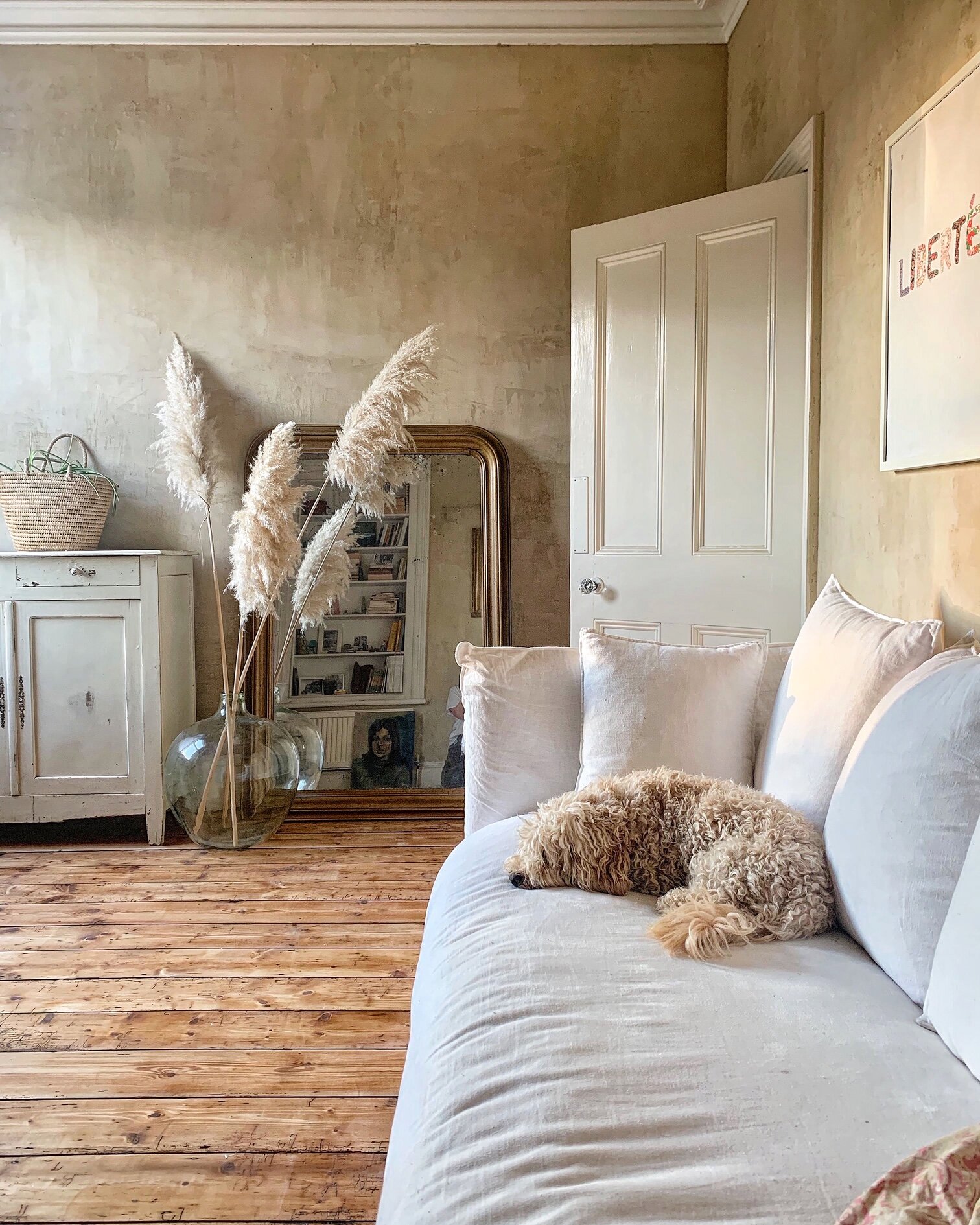Study painted in Autentico Volterra ‘Paris White’.
Probably the question I get asked the most is how I achieved the distressed paint effect in my study. I’ve had a go at most paint effects over the years - stippling, colour washing, rag rolling, to name but a few. Most can be done with ordinary emulsion but it’s not easy to get a really authentic looking distressed finish. The product I used for my study was a completely new and very exciting product by Autentico called Volterra. Volterra is a 100% mineral plaster paint so it’s actually less of a paint and more a plaster veneer. It looks so much more authentic than paint as it is effectively a thin layer of plaster. And because it’s more plaster than paint, you can work it with trowels and sandpaper to create different finishes. I wanted a shabby, parisian apartment look and here’s what I did to achieve it.
You will need:
Autentico Velvet paint
Autentico Volterra paint in same colour
A paintbrush
A clean, square edged trowel
A damp cloth and pot of water.
Firstly, I applied a coat of Autentico Velvet in Paris White. Velvet is a chalk based paint with excellent coverage. It covered the previously dark grey wall in one coat.
Autentico Velvet in Paris White.
Once this was dry I applied a coat of Volterra in Paris White. Volterra has a very thick, gooey consistency. I applied a coat of about 1 metre square at a time.
Apply Autentico Volterra.
Once the Volterra is applied you have about 10 minutes to work with it before it dries. To achieve the distressed effect you skim over the Volterra coat with a trowel. Use sweeping actions side to side and up and down. Wipe the trowel with a wet rag every few strokes to removed Volterra build up on the trowel. The more you ‘work’ the Volterra the more distressed the overall effect will be. It takes a little practice but after a few minutes you should have your technique sorted and you will soon realise that you can’t really go wrong!
Skim over the Volterra with a flat sided trowel.
Applying the Volterra and skimming over it with a trowel is pretty labour intensive but you can make it easier by buddying up with someone - one of you applies the Volterra and one of you skims over it with the trowel.
Once you’ve finished a wall or area it will look like this:
Freshly painted Volterra wall.
The freshly painted wall will look very patchy and quite dark. However, it dries much lighter, as in the picture below. Once dried, if you want more of a polished plaster look you can buff the wall with a fine grain sandpaper or electric sander.
This is exactly the shabby Parisian look I was hoping for and it was pretty easy to achieve. It’s obviously more labour intensive than a straighforward paint job but the extra effort is well worth it. Absolutely everything looks great against the wall and it adds so much character and depth to the room. It looks especially good in period properties.
The light coloured Volterra paints emulate the look of moroccan plaster work, otherwise known as Tadelakt, and the grey coloured paints emulate the look of polished concrete. Both Tadelakt and polished concrete are very expensive finishes so the fact that Volterra can emulate this look at a fraction of the price is very exciting. Even more exciting (although I havent tried it yet) is that the Volterra finish can then be sealed and varnished to become waterproof. This means that you can use it in many other situations, for instance:
create polished concrete effect counter tops (simply paint and varnish your old laminate counter top).
paint and seal a floor to create a polished concrete floor.
paint and seal the bathroom Tadelakt style thus no need for tiles.
There is a step by step guide to this wall on my Instagram Story here and if you have any questions about the product DM Layla at Autentico - she is super helpful.
This blog post is not sponsored by Autentico.






